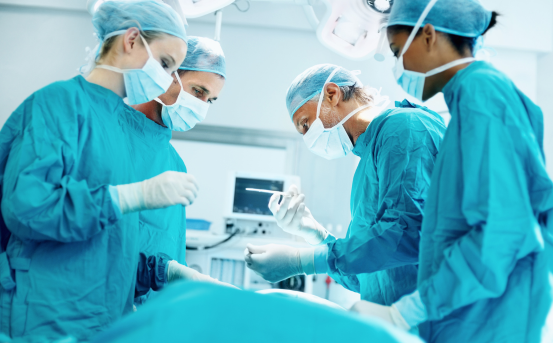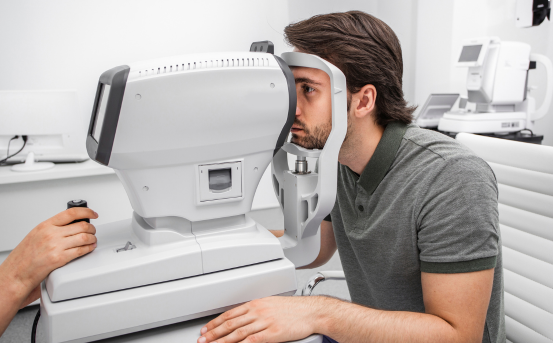What is chin augmentation surgery which has grown in popularity among both men and women who seek a sharper jawline, a more structured profile, or better harmony between their chin and nose. Often performed alongside other cosmetic procedures like rhinoplasty or facelift, chin augmentation is a key component in achieving facial harmony.
In the world of cosmetic enhancements, facial balance and harmony are crucial factors in achieving an aesthetically pleasing appearance. One procedure that plays a significant role in enhancing facial proportions is chin augmentation surgery. Whether it’s to create a more defined jawline or correct a receding chin, chin augmentation is a popular solution among individuals seeking subtle but effective facial enhancements.
What is Chin Augmentation Surgery?
Chin augmentation surgery, also known as genioplasty or mentoplasty, is a cosmetic surgical procedure aimed at reshaping or enhancing the chin. The goal is to improve the overall facial profile by either enlarging, repositioning, or reshaping the chin structure using implants or by moving the bone itself.
The procedure is ideal for individuals with :-
-
A recessed or weak chin
-
A lack of jawline definition
-
Asymmetry or disproportion between facial features
-
Desire for a more balanced facial structure
Chin augmentation can be performed alone or in combination with other facial procedures like rhinoplasty (nose job) or facelift for a complete facial makeover.
Types of Chin Augmentation
Chin augmentation surgery can be broadly categorized into two main types :-
Chin Implants (Alloplastic Genioplasty)
This involves inserting a synthetic implant to enhance the size and shape of the chin. These implants are made of biocompatible materials like silicone or polyethylene and are available in various shapes and sizes to suit individual facial anatomy.
Pros :-
-
Less invasive
-
Predictable results
-
Permanent enhancement
Sliding Genioplasty (Osseous Genioplasty)
This is a more complex surgical technique where the surgeon cuts the chin bone and repositions it to enhance projection or reduce prominence. It is especially useful for patients who require significant structural changes, such as correction of severe asymmetry or a recessed chin.
Pros :-
-
No foreign implant used
-
Suitable for major adjustments
-
Can address functional issues like bite misalignment
Who is a Good Candidate for Chin Augmentation?
You may be a good candidate for chin augmentation if you :-
-
Are in good overall health
-
Have a weak, recessed, or asymmetric chin
-
Have realistic expectations about the outcome
-
Are non-smoker or willing to quit smoking before and after surgery
-
Are bothered by your chin’s appearance and want to enhance facial balance
Consultation with a board-certified plastic or maxillofacial surgeon is crucial to determine if you’re an ideal candidate for the procedure.
The Chin Augmentation Procedure: Step-by-Step
Step 1 :- Consultation and Planning
Your surgeon will perform a detailed facial analysis, discuss your aesthetic goals, and recommend the most suitable technique implant or bone modification. They may use 3D imaging or morphing software to simulate results.
Step 2 :- Anesthesia
Chin augmentation is typically performed under local anesthesia with sedation or general anesthesia, depending on the complexity and whether other procedures are combined.
Step 3 :- Incision and Implant Placement or Bone Modification
-
Implant method :- An incision is made either inside the lower lip (intraoral) or under the chin (submental). The implant is placed in a pocket created over the chin bone and secured in place.
-
Sliding genioplasty :- The surgeon cuts the lower part of the chin bone and slides it forward or reshapes it. It is then fixed in place with titanium plates and screws.
Step 4 :- Closing the Incision
The incision is sutured, and a compression dressing is applied to support healing and reduce swelling.
Benefits of Chin Augmentation Surgery
Chin augmentation offers both aesthetic and psychological benefits :-
- Enhanced Facial Harmony :- Balances the proportions between the chin, nose, and cheeks, especially when combined with rhinoplasty.
- Improved Profile View :- Adds projection to a weak chin, improving side-view appearance significantly.
- More Defined Jawline :- Creates a sharper, more sculpted jawline, adding definition to the lower face.
- Boost in Confidence :- Many patients experience improved self-esteem and body image after the surgery.
- Long-Lasting Results :- Chin implants and bone modifications provide durable, often permanent results.
Risks and Complications
Like any surgical procedure, chin augmentation comes with potential risks, including :-
-
Infection at the surgical site
-
Implant shifting or displacement
-
Numbness or nerve damage (temporary or permanent)
-
Scarring (in case of external incision)
-
Unsatisfactory results requiring revision surgery
-
Bleeding or hematoma formation
Choosing a qualified and experienced surgeon reduces the likelihood of complications.
Recovery After Chin Augmentation
Week 1 :- Immediate Recovery
-
Swelling and mild discomfort are common.
-
Soft or liquid diet is recommended.
-
Pain is usually manageable with prescribed medications.
-
A compression bandage may be worn to support healing.
Week 2–3 :- Healing Phase
-
Stitches are removed if external incisions are used.
-
Bruising and swelling gradually subside.
-
Most patients return to work or routine activities within 7–10 days.
Week 4 and Beyond :- Final Results
-
Full results become visible as swelling disappears.
-
Avoid strenuous activities for at least 4–6 weeks.
-
Long-term outcomes become more apparent after 2–3 months.
Your surgeon will provide customized post-operative instructions to ensure optimal healing.
Non-Surgical Chin Augmentation: An Alternative
For those who are not ready for surgery, non-surgical chin augmentation using dermal fillers is a temporary alternative. Hyaluronic acid-based fillers can enhance chin projection and shape with immediate results and minimal downtime. However, these effects last only 6–18 months and need repeated sessions to maintain results.
Chin Augmentation vs Jaw Surgery: What’s the Difference?
It’s important not to confuse chin augmentation with orthognathic (jaw) surgery. While chin augmentation modifies the front of the lower jaw (the chin), jaw surgery is meant to correct misalignments of the upper or lower jaw, often for functional issues like chewing, speech, or breathing.
If your concern is purely aesthetic, chin augmentation may be sufficient. However, if you have bite issues or jaw asymmetry, you may need a more comprehensive evaluation.
Conclusion
Chin augmentation surgery is a highly effective procedure to enhance facial aesthetics and balance. Whether you’re looking to add projection, correct asymmetry, or define your jawline, this procedure offers long-lasting and satisfying results.























